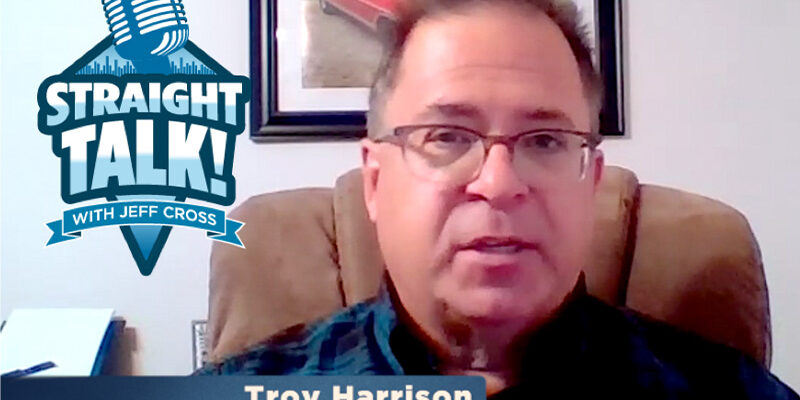Embracing JOMO: How to Help Your Team Separate Work From Life More Effectively

By Samantha Hager
Business leaders and owners often struggle with employee satisfaction, productivity, and retention rates in the workplace. In the 2021 Bureau of Labor Statistics report, the overall turnover rate for employees in America was 57.3 %. Burnout caused by being overworked even beyond regular working hours accounted for most of this mass exodus in the last few years—and it’s about time that companies recognize this. If cleaning and restoration business owners and leaders don’t take the time to eliminate FOMO and embrace a healthy work-life balance for all their employees, the outcome will be even more dissatisfaction and turnover locally. To see how fomo already negatively affects the workforce, let’s take a look at a few data points associated with this dilemma below.
The negative impact of FOMO in the workplace
Workplace FOMO, or fear of missing out, is defined as pervasive apprehension that, relative to other employees, one might miss valuable career opportunities when away or disconnected from work. Although this may seem like a charming attribute that once was used to define hardworking employees, the truth is that the outcome of this concept is far less charming than it appears at first glance. Over time, an employee experiencing workplace FOMO will begin to have a poor work-life balance and experience burnout as a result. This burnout will then affect their satisfaction and passion for their jobs as well as their productivity and quality of work on projects.
in the restoration and carpet cleaning industries, FOMO may appear in the form of messaging after hours, working over hours on projects, or staying late to help clean up the workspace and tools/cleaning product supplies. While this may seem like a nice and beneficial thing at first as a small business owner looking for employees to go above and beyond, being able to develop a workplace dynamic that separates your team’s work life fro mtheir personal lives is crucial for longterm retention, satisfaction, and productivity. Below are just a few of the results that stem from a poor workplace dynamic fueled by FOMO:
- According to a study completed by Indeed.com, most employees seem to experience FOMO due to the atmosphere they work in.
- Approximately 45% of respondents claimed to miss either the work aspect or their team members when they were out of the office.
- In a survey of over 1000 respondents by Deloitte, 77% say they have experienced burnout at their current job.
- 91% say that unmanageable stress or frustration impacts the quality of their work.
- 83% say burnout can negatively impact personal relationships.
- 64% of employees say they are frequently stressed at work.
- Nearly 70% of professionals feel their employers are not doing enough to prevent or alleviate burnout.
- The majority of employees say that they regularly check their work email during their off-hours.
- On average, employees work four hours per week that they don’t get paid for and spend another four hours outside of the office thinking (or stressing) about work each week.
- 57% of surveyed employees say a poor work-life balance is a deal-breaker when considering a job.
- 66% of workers say they often skip at least one meal per day because of work.
- 42% of these same workers say they worry there will be issues at work when they’re away.
In order to overcome these statistics, company leaders must recognize the power of JOMO instead, teach this concept to their employees, and develop a structure that is built on a separation of work and home moving forward. With that being said, let’s take a closer look at the meaning of JOMO and how to build these dynamics effectively for the new year ahead.
‘What is JOMO?’: Teaching your team a sense of balance through structure
According to Connections by Finsa, “JOMO is the acronym for the Joy of Missing Out, or enjoying what you’re doing in each moment without worrying about what everyone else is doing. JOMO is a sociological phenomenon which is a response to FOMO, or the Fear of Missing Out, the fear of being “out of the loop”, or not being the “coolest.””
When it comes to workplace JOMO, the idea is to be content with putting work aside when leaving the office and choosing to separate life from work in a healthy manner. This helps employees to have more time with their friends and families while also reducing burnout and dissatisfaction in the workplace as well. For restoration and carpet cleaning professionals, the ability to clock out at the same time each day and put projects aside during family and self care time helps to increase productivity and passion when on the job during scheduled hours.
However, developing workplace structures that embrace this concept is easier said than done. Fortunately, there are a few ways to develop these dynamics that business owners and leaders can begin to implement immediately for greater success and lower turnover rates in the future. Here are just a few ideas to get started:
- Set boundaries with clients
- Define employee hours and approve all overtime personally
- Create structures to help parents and struggling employees find time for personal needs
- Conduct standups and one-on-ones to ensure your team is heard
- Ecnourage vacation time and self care outside of the workplace
- cut all communications that aren’t emergencies after hours
- Respect your employees’ off days
- Lead by example and create your own work-life balance
By slowly but surely adding these strategies to your daily operations, you can show your team that yo ucare, increase your retention rates, and find new talent based on the satisfaction of your current team likewise. Plus, who doesn’t love saving money through retention anyways? According to PeopleKeep, “Some studies predict that every time a business replaces a salaried employee, it costs 6 to 9 months’ salary on average. For a manager making $60,000 a year, that’s $30,000 to $45,000 in recruiting and training expenses.”
With astonishing numbers like this attributed to employee turnover, it only makes further sense to embrace JOMO, ditch the feelings of FOMO and burnout within your team, and create a truly satisfied workforce just in time for the start of the new year.












